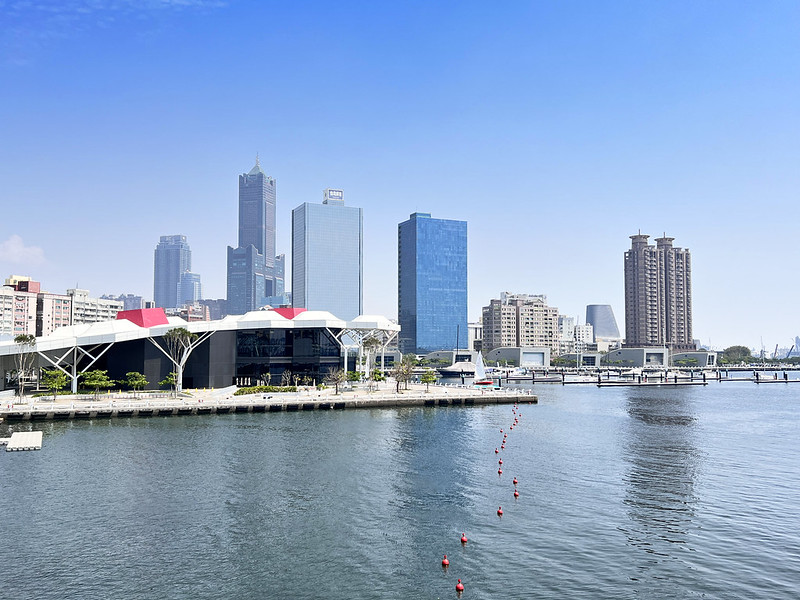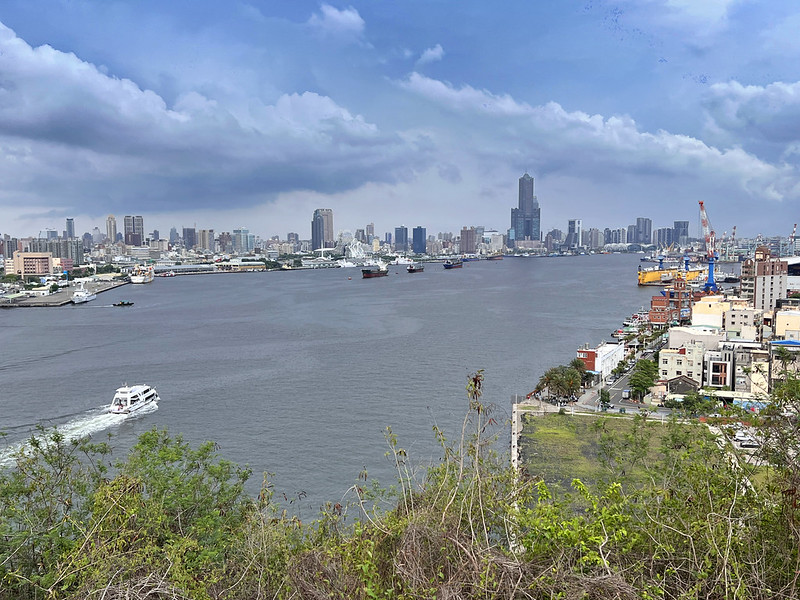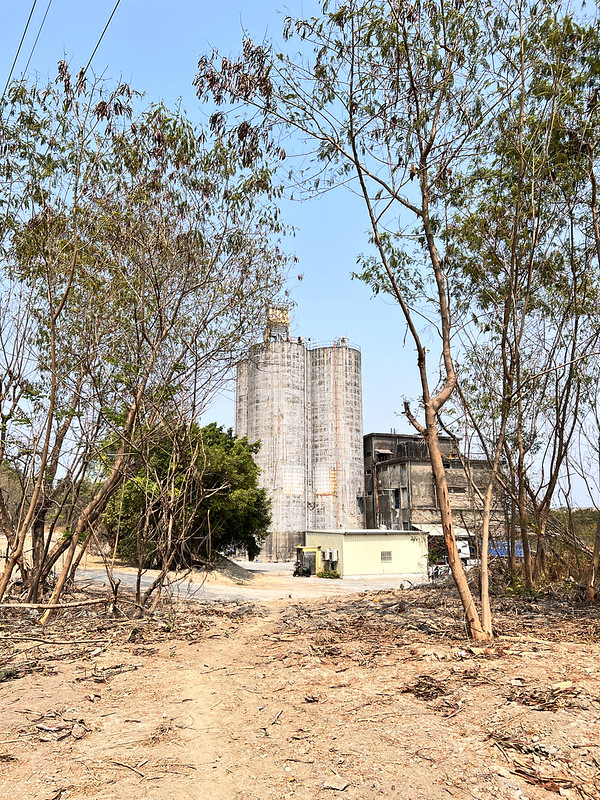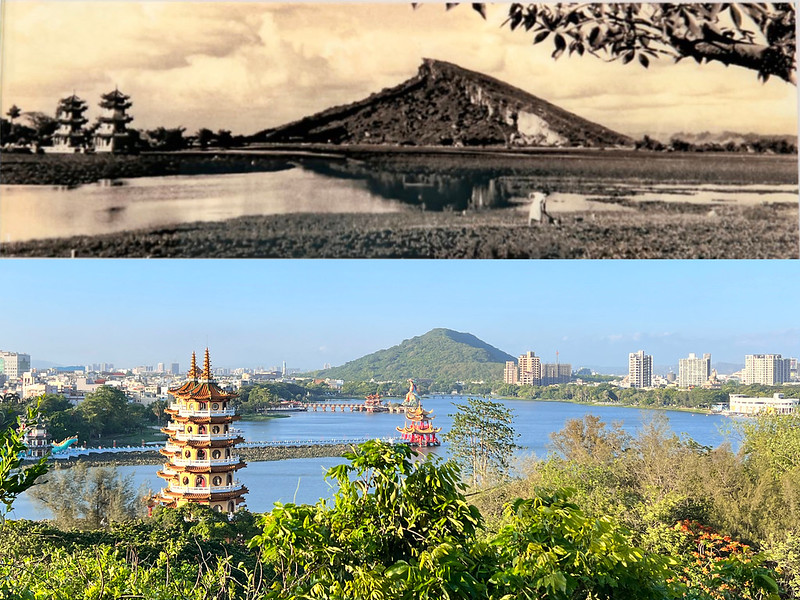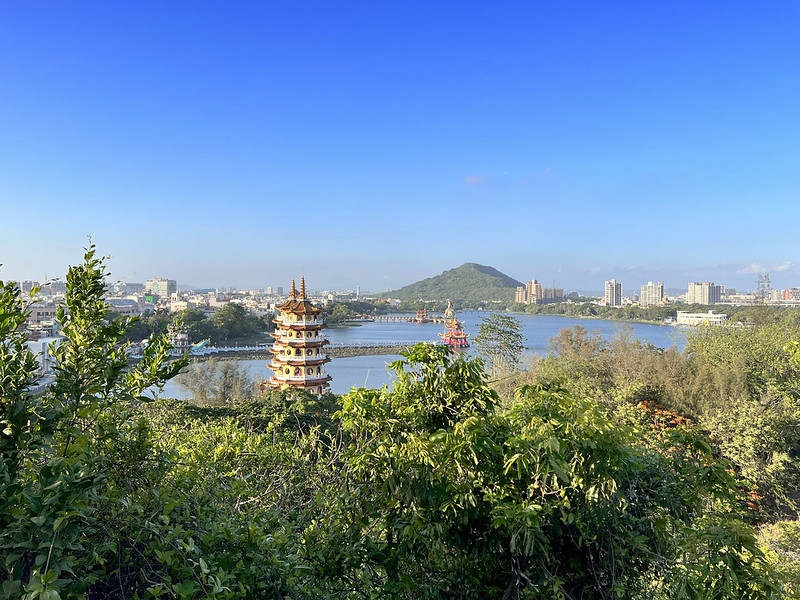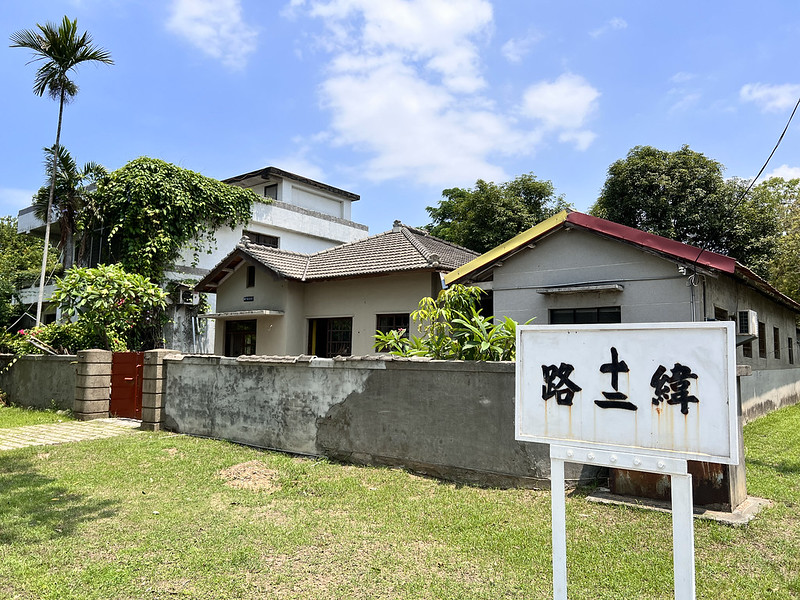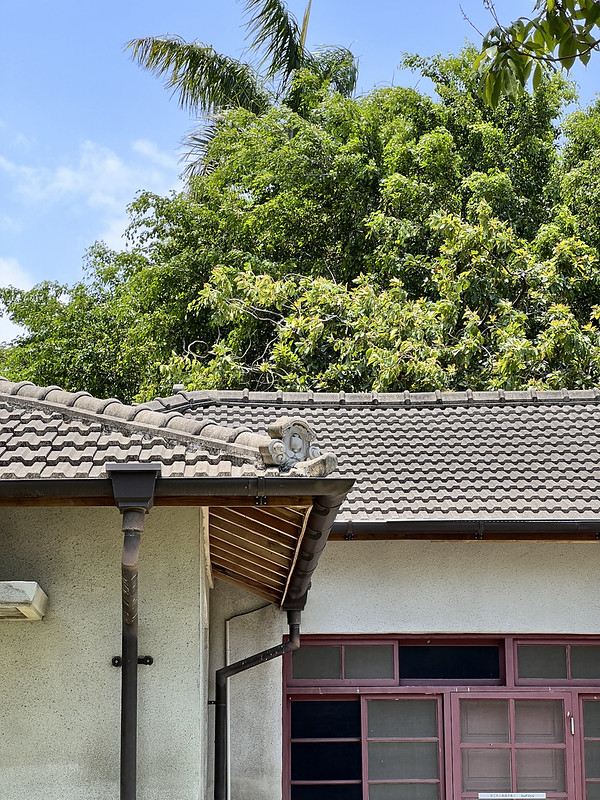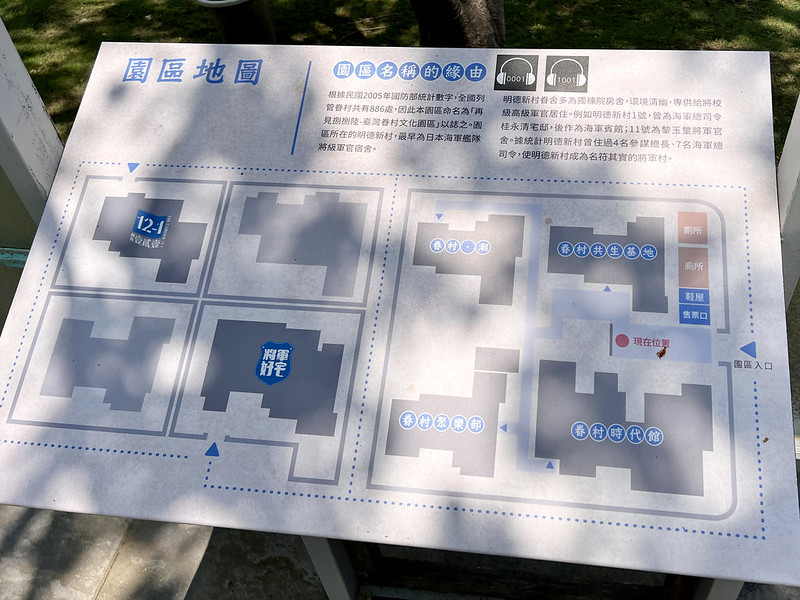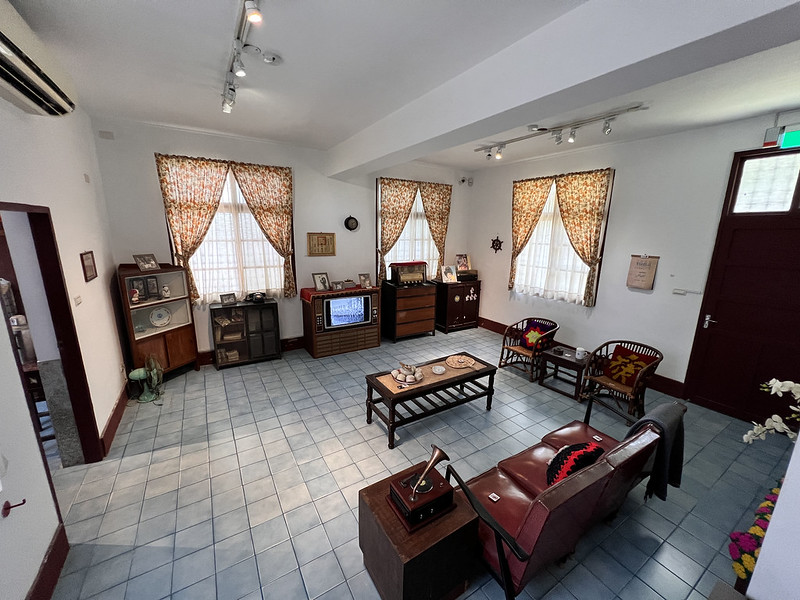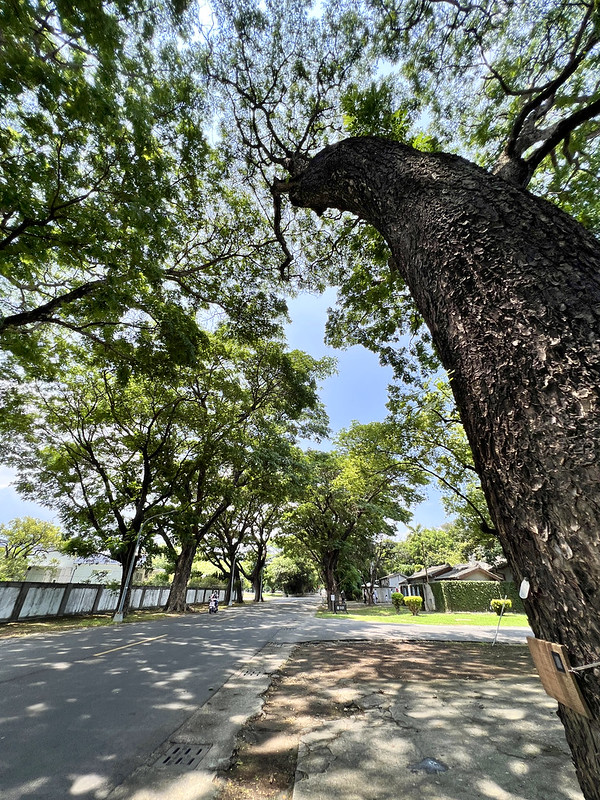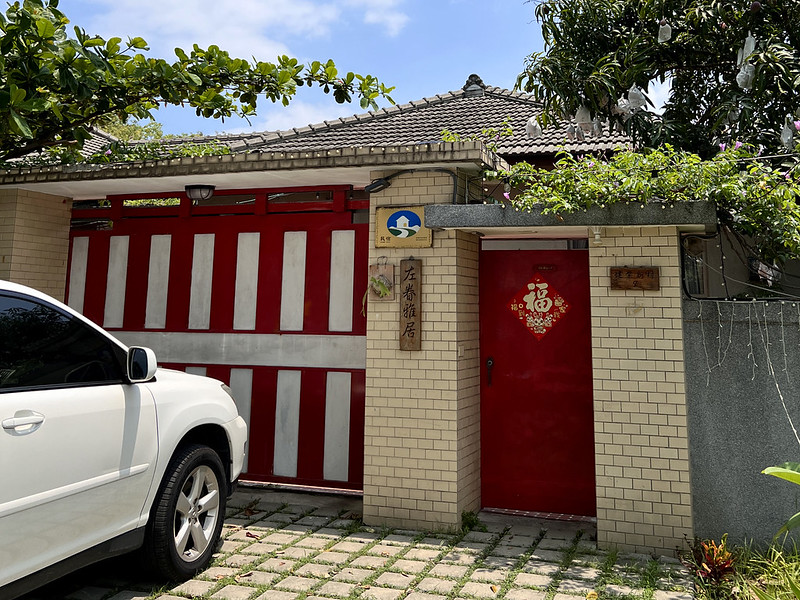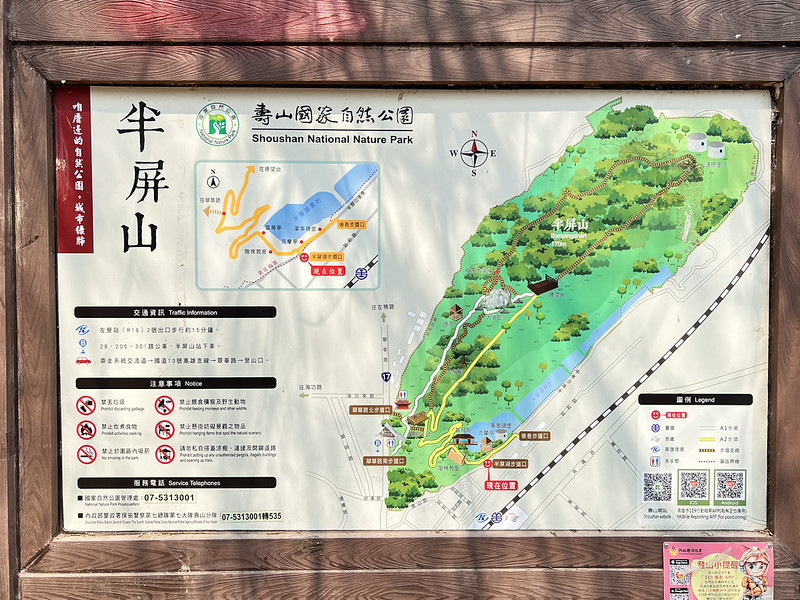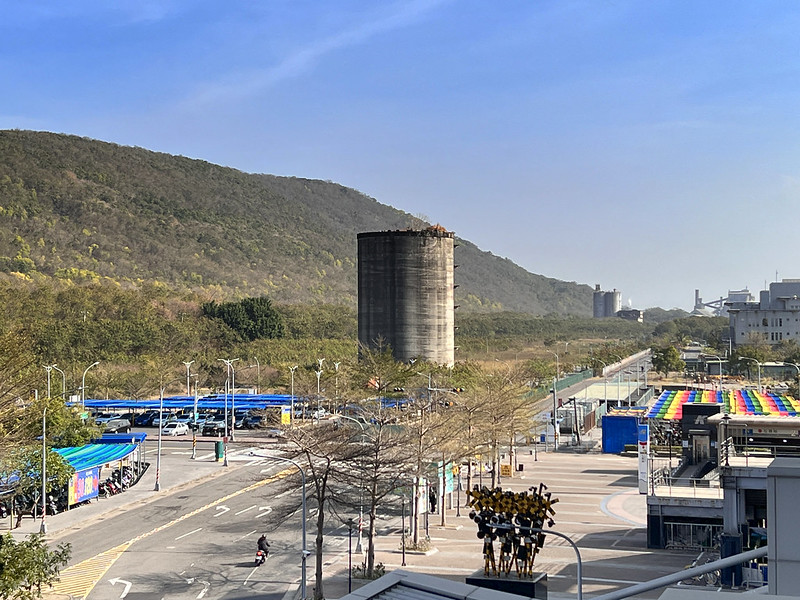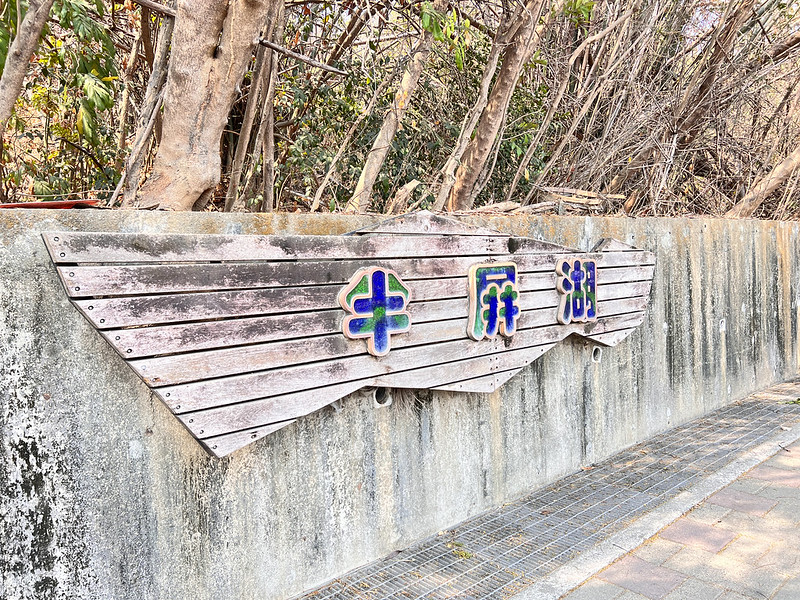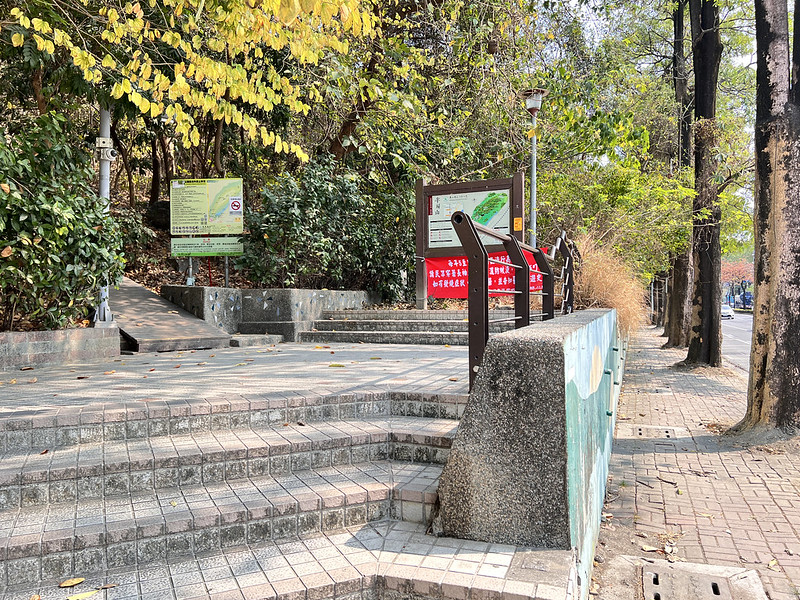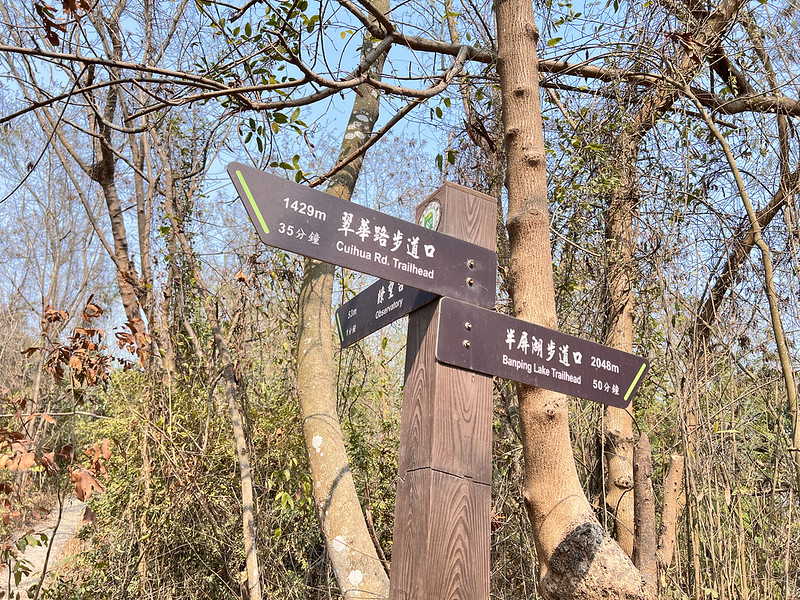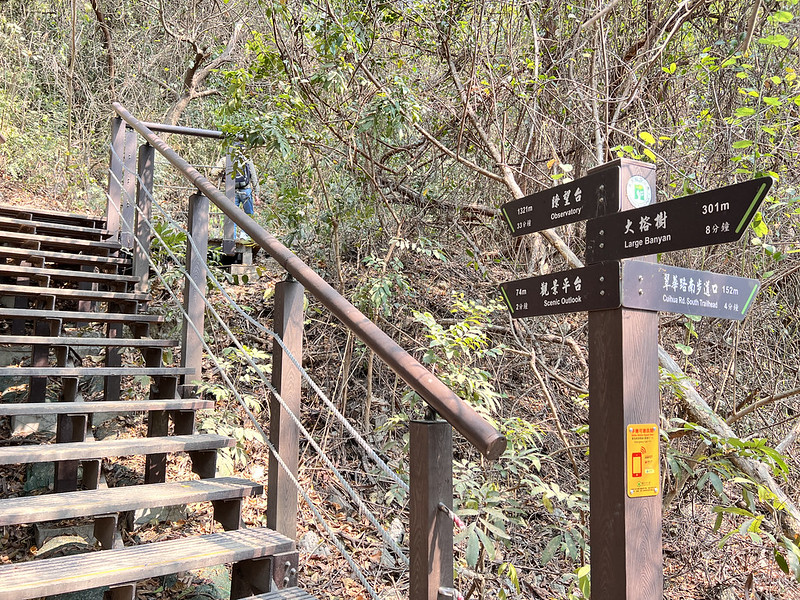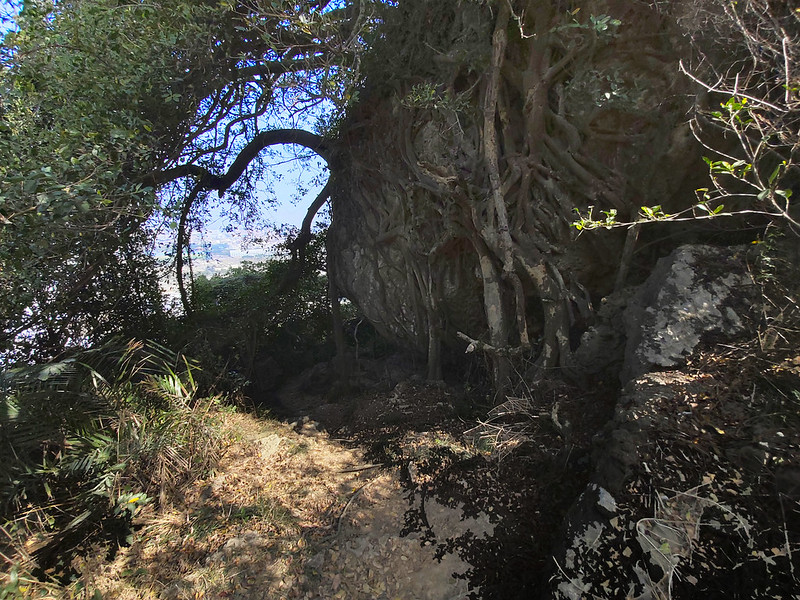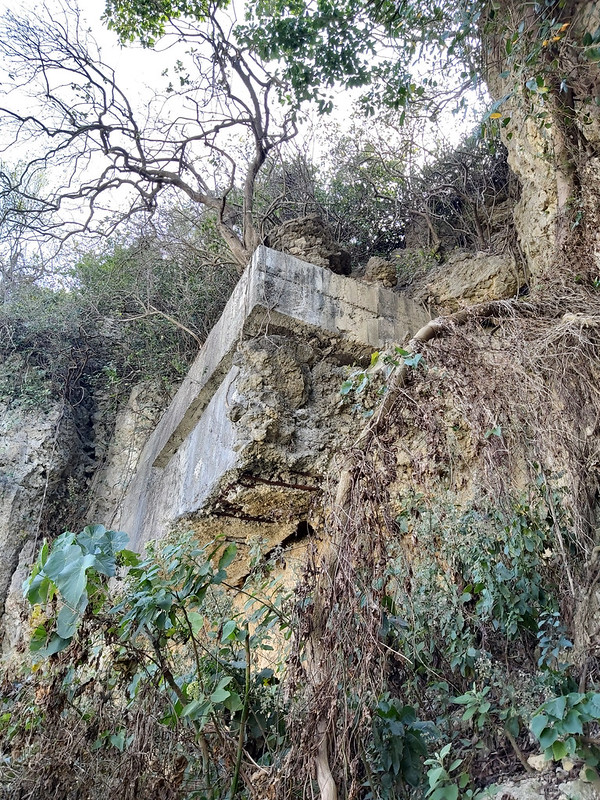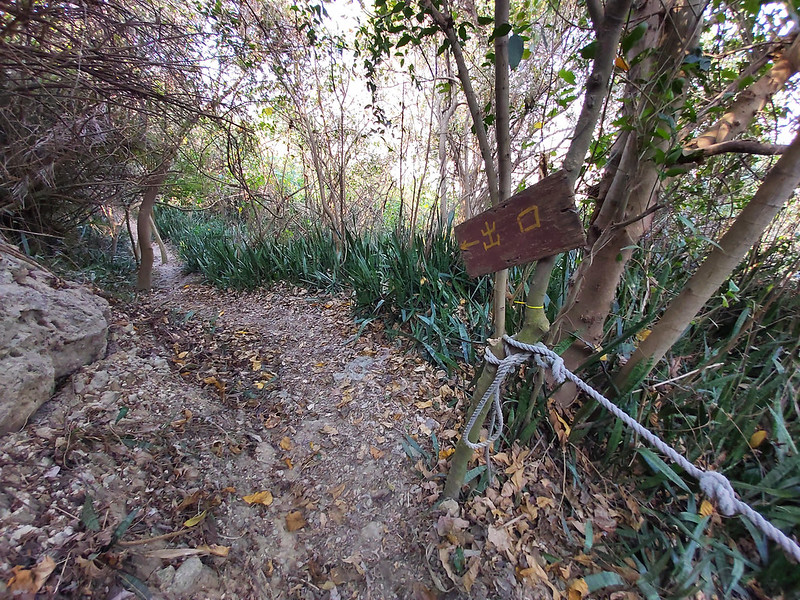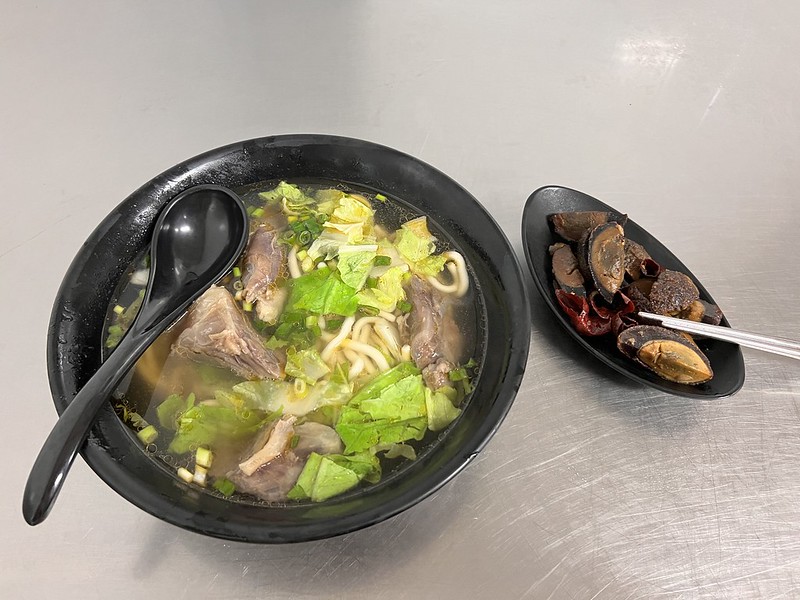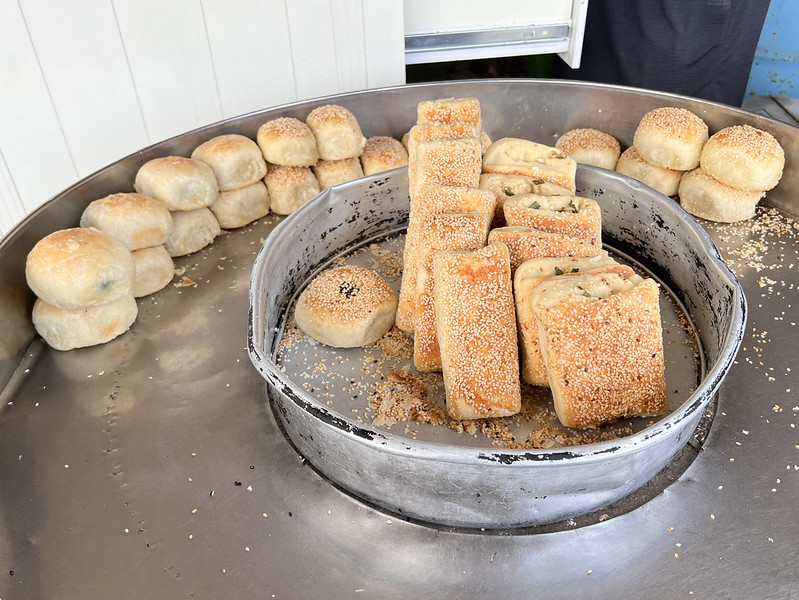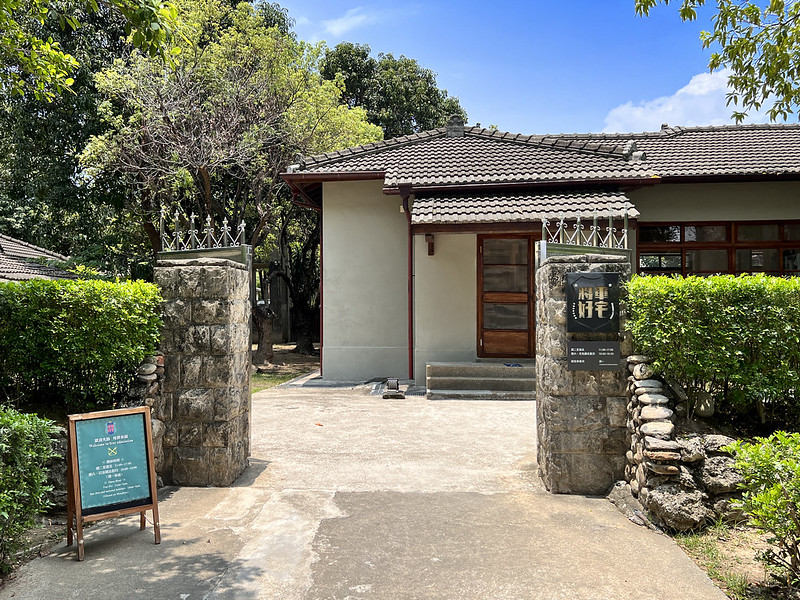Kaohsiung Nature and History Series: Banpingshan and Military Dependents' Villages in Zuoying
While Kaohsiung City may not have as many easily accessible hiking trails as Taipei, it still offers many opportunities for backpacking and exploration. As a native of Kaohsiung who had spent decades working in Taipei, I was surprised to discover how much I had missed in my hometown.
In this post, I will share with you the history of Kaohsiung, Banpingshan, and Military Dependents' Villages, as well as tips for planning your travel using various modes of transportation. Whether you choose to use UBike, MRT/Tram (Light Rail Transit), bus, or explore on foot starting from Taiwan High Speed Rail, you can experience the beauty of Kaohsiung's nature and learn about its rich history in just one day.
This is Part 1 of the Kaohsiung History and Nature series, with Part 2 focusing on Old Fongshan City and Lotus Pond.
Disclaimer:
All content is for inspiration only. Use Taiwan Hikes' suggestions at your own risk. We are not responsible for any losses, injuries, or damages.
Taiwan Hikes may include affiliate links. When you purchase through these links, you support our ability to continue providing FREE content — at no additional cost to you.
All content is for inspiration only. Use Taiwan Hikes' suggestions at your own risk. We are not responsible for any losses, injuries, or damages.
Taiwan Hikes may include affiliate links. When you purchase through these links, you support our ability to continue providing FREE content — at no additional cost to you.
Table of Contents:
Exploring Taiwan? Save Time with the Ultimate 2025 Hiking Guide! Discover the top hikes in every city and county across Taiwan—all accessible by public transport (bus links available). We've spent 50+ hours researching the best trails and transit options, so you can skip the hassle and start your adventure!
About Banpingshan and Military Dependents' Villages and Why You Should Visit
Today's Kaohsiung City is very different from my memories in the past after the merger of city and county 縣市合併 in 2010, from the jurisdiction, geography, cityscape and municipal debts. I feel like a tourist in my hometown, and I am relearning things about Kaohsiung.
Your support empowers Taiwan Hikes to create more FREE content, making your hiking adventures in Taiwan even more enjoyable. Click "Buy Me A Coffee" or use our affiliate links to support.
Mt. Banping or Banpingshan: The Mountain Wrecked for Its Limestone
Banping literally means half screen in Chinese. In the Taiwanese dialect, the contour of Ban Ping looked like the mountain was chopped in half, which turned out to be true. This unfortunate mountain was chopped even more later.
My first memory of Banpingshan started in high school. I studied at Zuoying High School, which is close to Banpingshan. We could see the cement factory dismantling the top of the mountain, and the contour of the mountain was different everyday.
So, I never understood why Mt. Banping was called Banping until I found the old photo taken during the Japanese Occupation.
The quarries started during the Qing Dynasty. Later, the Japanese government established cement factories and continued extracting limestones. In 1997, the Kaohsiung Government stopped issuing mining rights. Banpingshan finally got a break and started to recover.
It is said that the original height of Banpingshan was 233 meters (764 feet) above sea level, but now it's 181 meters (594 feet) (another record said it's 170 meters/558 feet).
In 2011, Taiwan established the first national natural park, Shoushan National Natural Park 壽山自然國家公園. This park includes Shoushan, Banpingshan, Guishan (Gueishan), Zuoying Old City (Old Fongshan City), Mt. Chihou or Qihou (post coming soon) 旗后山, and the Former British Consulate at Takao 打狗英國領事館及官邸.
I finally set foot on Banpingshan for the first time and saw how amazing this mountain was in 2020.
Zuoying Military Dependents' Villages and Cultural Heritages
Military Dependents' Villages, or Juan Cun 眷村 in Chinese, are the communities built in the 1940s and 1960s. When the government of the Republic of China and the then ruling party, KMT, retreated to Taiwan in 1949, the government needed to accommodate those soldiers, sailors, airmen, marines, and high-ranking officials and their dependents.
The then government took over those houses left by the Japanese government and built new ones for the military personnel.
Those military personnel and their families came from different provinces all over China. They brought their culture and cooking to their new homes and shared with their neighbors. They formed a special bond with each other, which became a unique culture and lifestyle.
After 1970, Ministry of National Defense established several agencies, and the government and lawmakers passed regulations to rebuild and renovate the military dependents' villages. Many of them were demolished and replaced by new residential buildings.
With a navy port, Zuoying was the biggest base of the navy force and became the biggest military dependents' community in Taiwan.
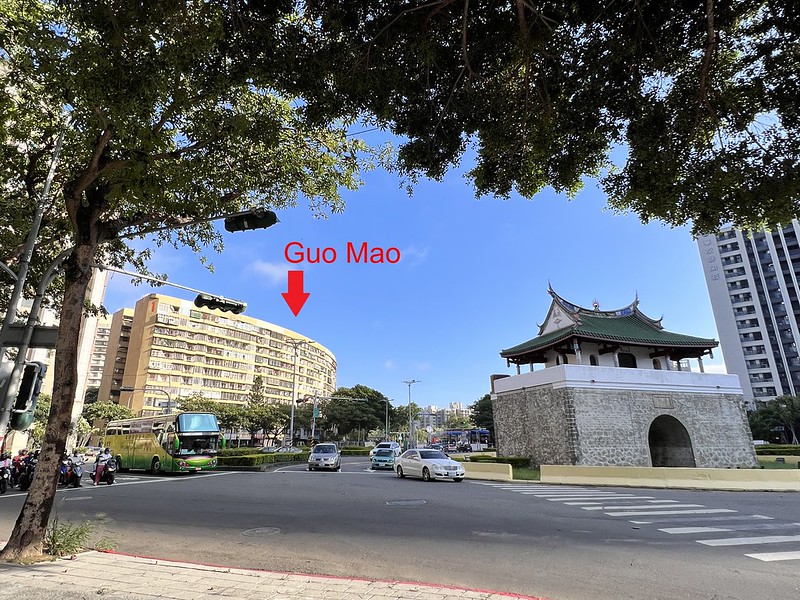
Mingde Village 明德新村 in Zuoying is well-preserved and converted into a cultural park. Mingde Village used to be the Japanese officials' houses and later accommodated high-ranking navy officials like generals.
4 Chief of the General Staff, 7 Chief of Navy General Headquarters, and the former Japanese Prime Minister, Yasuhiro Nakasone, resided here.
The area of Mingde Village is around 6.6 hectares (2.47 acres) with 58 houses. 57 of them are preserved at Farewell 886 Park. In the yards, you will see many 100+ years old trees and fruit trees like Mango and Starfruit.
Another famous military dependents' village is Four Four South Village 四四南村, in the Xinyi District of Taipei City, right next to the tallest building in Taiwan, Taipei 101.
Itineraries, Maps/ GPX Data, How to Get There and Accommodations to Consider
Brief itinerary: High Speed Rail Zuoying Station (aka Xin Zuoying Station) ➔ Banpingshan ➔ Farewell 886 - Cultural Park of Taiwan Military Veteran Village, and Admiral's Residence ➔ Jiancheng Exhibition Hall (Center of Old Fongshan City History) and City Gates/relics ➔ Guishan Trail ➔ Lotus Pond ➔ High Speed Rail Zuoying Station
If visiting all those places is too much in one day, you can arrange the destinations you are interested in.
Public Transportation and UBike
This route starts at Zuoying Station on High Speed Rail. You can get there by Kaohsiung MRT, train, or bus. If you travel with your luggage, there are lockers at Zuoying Station (MRT, High Speed Rail, and Xin Zuoying Station).
To make this loop walk/hike, you can do it on foot or by UBike to connect those stops. Here is the map for UBike docks.
Accommodations to Consider
To transform the old military dependents' houses and give them a new life, the Kaohsiung Government initiated a project called Living to Replace Maintenance (I can't find the official English translation) 以住代護 to preserve those houses in Huangpu Village 黃埔新村 of Fongshan in 2014. This project extended to Jianye Village 建業新村 of Zuoying.
This project encourages those interested in Juan Cun culture to send their proposals of how they will run businesses with those houses. Some houses have transformed into B&Bs, restaurants, workshops, etc.
If you want to have a taste of Juan Cun's life, you can click here to see those B&B and book your stay in Kaohsiung. Some B&B owners grew up in Juan Chu, and they have tons of stories to share.
Mt. Banping Trail: the Cement Industry Survivor
Distance: 3.2+ km (2+ miles) depending on how long you want to hike
Route type: Loop or out-and-back
Days/Hours Needed: hours
Total Ascent/Descent: 345 m/ 341m
Best Time to Go: All year round
Permits: Not required
Difficulty Level:
Route type: Loop or out-and-back
Days/Hours Needed: hours
Total Ascent/Descent: 345 m/ 341m
Best Time to Go: All year round
Permits: Not required
Difficulty Level:

Peaks or Places to Reach
- Mt. Banping or Banping 半屏山, 181 meters (594 feet) above sea level.
- Banping North Peak Blockhouse 北峰碉堡
Others:
- Some sections of the trails at Banpingshan are exposed to the sun. Please do sun protection.
- I didn't see any shops around Banpingshan. If you need water or trail food, please get them at Xin Zuoying Train Station.
- When the High Speed Rail train approaches its final stop, Xin Zuoying Station, you will see a small mountain on your right. That is Banpingshan.
Banping Lake Wetland
This wetland used to be the silting basin for the cement factories.
According to the map of Shoushan National Nature Park (Banpingshan is under its administration), there are trailheads closer to the High Speed Rail station. However, I didn't find them when I did this hike twice.
So, I suggest you take the trailhead on Cuihua Road (翠華路). There are 2 trailheads on Cuihua Road. Taking either one is fine, and you will find toilets on both.
I tried to look for Banping Wetland, but Kaohsiung was experiencing severe droughts when I was there. All I saw was dust and a dry basin.
The Best Spot to See Lotus Pond and Shoushan
The easiest way to enjoy Banpingshan is to follow the steps, a loop trail according to the maps.
There is a great spot to overlook Lotus Pond and Guishan. You will pass a big flat area whether you take the south or north trailhead. Follow the sign to the observatory (a deck), and you will see an opening with a view.
Honestly, I wouldn't notice this spot if it weren't for the drought that made the trees wither. I didn't see this when I first came here in 2020.
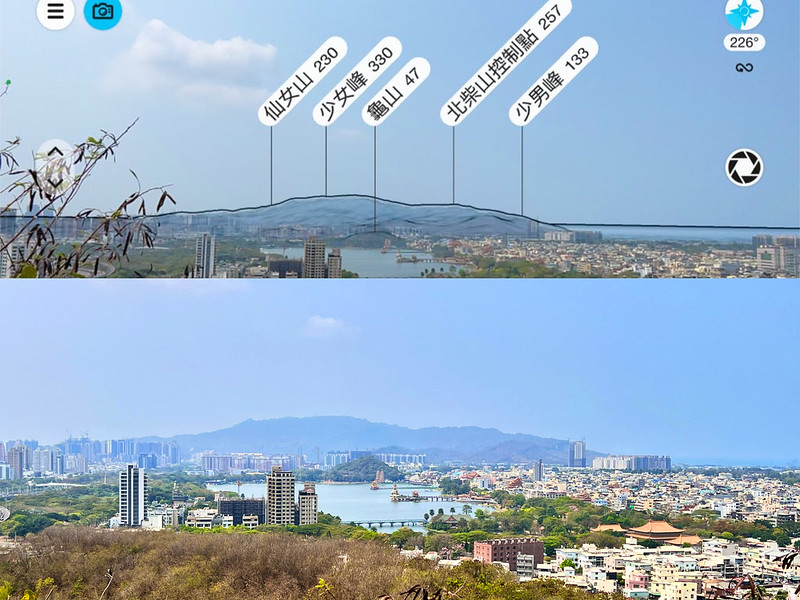
If you come here late in the evening, this might be a great spot to see the sunset. The rest of the footpath to the trailhead is manageable in the dark with a smartphone light.
Limestone and Jungle Landscape at Banpingshan
After this spot, you can follow the footpath to the observatory. The maps here only show you the main footpath, but if you check your map app, you will see many small trails without the steps and planks.
As an adventurous hiker, I was curious about those more rugged, natural trails when I first did this hike in 2020. I wasn't disappointed.
The limestone and the trees are so different from the woods I saw in northern or eastern Taiwan. It was so lush and vibrant.
Please proceed with caution if you choose to explore the rugged sections like me. Scratching on the limestones is not fun. They look very sharp and rough. If you get confused here, please return to where you were. There are other great spots on the footpaths.
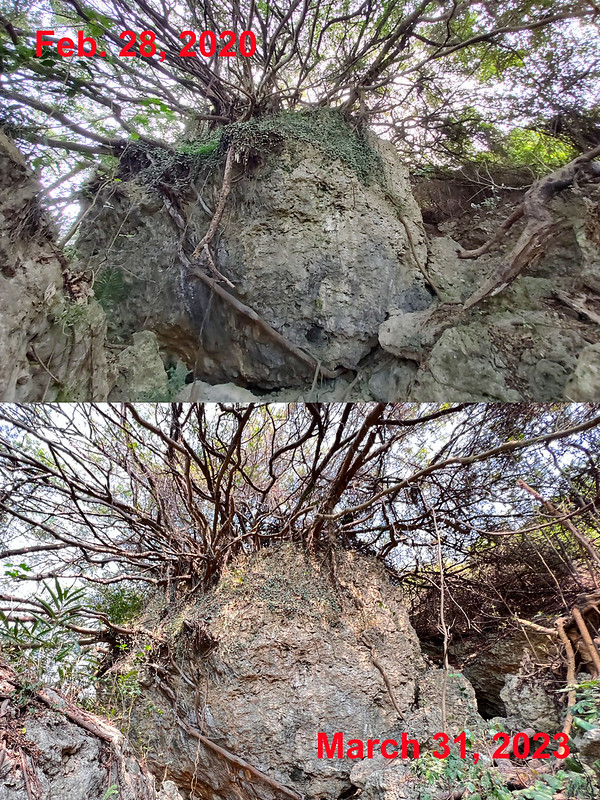
A Deck to See Northern Kaohsiung
There are several spots you can't miss at Banpingshan. If you follow the footpath, you will reach a big deck.
The views are great on both sides. You will see Zuoying, Kaohsiung National Stadium 高雄世運主場館, and Nanzih in the north.
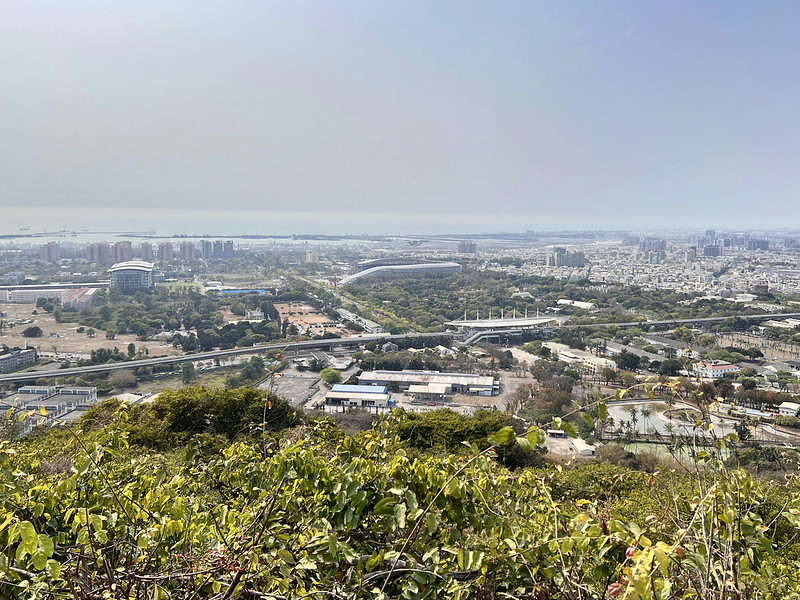
When you reach here, the trail is flat. After all, Banpingshan was leveled off by the cement factories.
Banpingshan North Peak Blockhouse
If you want to see this old bunker, the following trail is more rugged but still manageable. You will see more limestones and interesting trees along the way. The trail here is a little bit tricky, but the footpath is still visible.
And the Kaohsiung Refinery can be seen from here.
When I was there, other hikers were around, so I didn't take the full image. You can see some parts of the bunker here.
You can get inside the bunker to look if you are more adventurous. I'm not comfortable with going inside. You can check out this blogger's photos to see the interior. Or check out this Canadian expat's post about his adventure to this bunker.
After finishing the bunker adventure, you follow the same way back or continue the footpath. You will see this sign telling you where to go.
If you follow this way, you mostly hike in the woods, passing a wire fence and a bridge made of reclaimed materials. Soon, you will return to the plank steps and exit the trail.
Military Dependents' Villages: Serenity in A Industrial City with Rich History
Farewell 886 再見捌捌陸
- Admission fee: NT$50
- Free guided tours: 11:00 and 15:00
- Audio guide rental: free with the ID as a deposit
- No food or drink is allowed.
When I visited Farewell 886, I was lucky to catch up with the guided tour at the park. Mr. Zhou, a retired airman, told us that Juan Cun was a very closed community. They knew each other so well that they could immediately spot an outsider. They even didn't have to lock the door at night.
They shared a strong Juan Cun identity. Later, this identity even developed into several famous mafias in Taiwan. The culture brought by Military Dependents' Villages brought influence in Taiwan, especially in food.
Those who came from Juan Cun were called Wan Sheng Ren, meaning Foreign Province People in Chinese. Many veterans missed their food from home so much that they flexed their culinary muscles at home.
Some of them started running restaurants selling beef noodle soups. In the old days, rice was the primary source of carbs intake for most Taiwanese people. Noodle soups were new to them. Those noodle soups are also called Wai Sheng Mian, meaning Foreign Province Noodles.
Later, Wai Sheng Mian has become a brand to advertise their food as authentic flavors.
Many celebrities also have Juan Cun's background. The famous director, Ang Lee, was born in one of those villages in Pingtung.
I wish I could hear more stories about Juan Cun from Mr. Zhou. I forgot to take photos of Mr. Zhou, but I will revisit this place.
Visiting this area is very special to me. I was born in one of those villages near Banpingshan. Although my parents moved away when I was an infant, they often took me to visit their old friends. I still remember what their houses looked like and the atmosphere around here.
Why is this place called Farewell 886? According to a survey conducted by Ministry of National Defense in 2005, there were 886 registered Military Dependents' Villages in Taiwan. Many of them are gone. Yet, those villages are part of the unique Taiwan heritage.
Ministry of National Defense decided to keep 13 of them, worked with other agencies, and transformed them into cultural, educational, and historical attractions to let this page of history emerge.
Not every military family could live in such a lovely house. Those with low ranking could live in a tiny space of about 13.2 m2 (142 feet2) and shared bathrooms and kitchens with 10 families, no matter how many kids they had.
The houses at Farewell 886 were built during the Japanese Occupation and later became homes for high-ranking officials. Why it's called Farewell is to pay tribute to the villages and look forward to their transformation in the future.
Admiral's Residence 將軍好宅
- Admission fee: free
- No food, drink, or using a selfie stick or a tripod is allowed.
- Closed on Mondays
After Farewell 886, you make two left turns, and you will see a big, beautiful campus. Soon, you will reach Admiral's Residence.
When I went inside this house, I gasped with excitement several times because I saw so many items that brought me back to my childhood: games, stationery, kitchen items, etc. This was so nostalgic.
Even if you are not that into history or don't share the same sentiment with me because of our different backgrounds, this place is still fascinating. The big old trees and old houses are one of the kinds in Taiwan.
I visited here in early June, and the summer heat and humidity made me restless. Yet, sitting on the bench under those beautiful trees took away my agitation and allowed me to enjoy this quiet place.
This area may not be a typical tourist spot, but it definitely gives you peaceful vibes.
I hope you enjoy this post. Are you planning to visit Kaohsiung if you have yet to be here? Many people told me that Kaohsiung is the city they like the most in Taiwan. What do you think? Feel free to let me know in the comments below.


